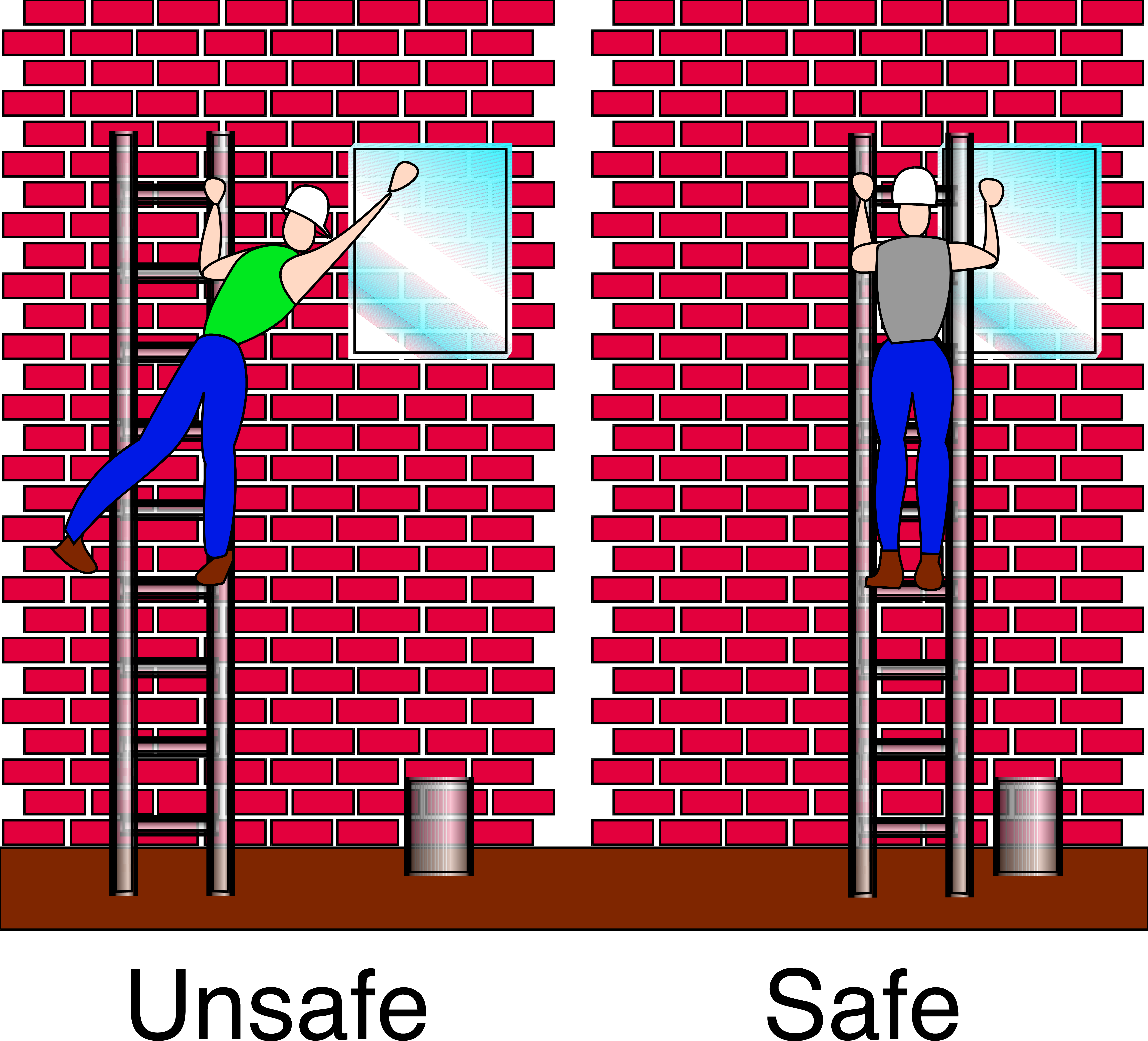Accidents involving ladders lead to an alarmingly high amount of work-related incidents. The use of ladders is usually associated with the performance of work or tasks from an elevated position. When visiting a construction site, I saw a pregnant lady on a stepladder painting. When I walked closer to her to discuss the matter, I saw that the ladder she was standing on was defective and poorly maintained.
Working on heights is traditionally labelled or classified as a high-risk activity. Incident records include numerous accounts of workers killed in falls from ladders. Serious head injuries and broken bones are frequent outcomes of ladder mishaps. Many electrocution deaths are caused by ladders that accidentally make contact with electrical sources like high power lines.
Typical questions asked in this regard include questions like:
What is meant by ‘‘working at heights’’? How high is a height? From what height should a ladder or scaffolds be used? What are the requirements set for ladders?
General Safety Regulations of the Occupational Health and Safety Act (Act 85 of 1993), deal with ‘‘work in elevated positions’’. No specific height is mentioned by this regulation; in fact, anything off ground should be considered as a height or elevated position.
This regulation stipulates that no person may work or be allowed to work in an elevated position (above ground level) unless such work is performed safely from a ladder or scaffolding, or from a position where such person has been made as safe as if he or she were working from scaffolding. How many times do we climb on items like a chair or drum to reach an item from a shelf or cupboard?
Conditions and Compliance For The Safe Use Of Ladders:
- Employees who use ladders must be trained in the proper selection, inspection, use and storage.
- Always inspect the ladder prior to using it. If the ladder is damaged, it must be removed from service and tagged until repaired or discarded.
- Always maintain a 3-point (two hands and a foot, or two feet and a hand) contact on the ladder when climbing. Keep your body near the middle of the step and always face the ladder while climbing (see diagram).
- Ladders must be free of any slippery material on the rungs, steps or feet.
- Do not use a self-supporting ladder (e.g. step ladder) as a single ladder or in a partially closed position.
- Do not use the top step/rung of a ladder as a step/rung unless it was designed for that purpose.
- Use a ladder only on a stable and level surface, unless it has been secured (top or bottom) to prevent displacement.
- Do not place a ladder on boxes, barrels or other unstable bases to obtain additional height.
- Do not move or shift a ladder while a person or equipment is on the ladder.
- An extension or straight ladder used to access an elevated surface must extend at least 3 feet above the point of support (see diagram). Do not stand on the three top rungs of a straight, single or extension ladder.
- The proper angle for setting up a ladder is to place its base a quarter of the working length of the ladder from the wall or other vertical surface (see diagram).
- A ladder placed in any location where it can be displaced by other work activities must be secured to prevent displacement or a barricade must be erected to keep traffic away from the ladder.
- Be sure that all locks on an extension ladder are properly engaged.
- Do not exceed the maximum load rating of a ladder. Be aware of the ladder’s load rating and of the weight it is supporting, including the weight of any tools or equipment.

Click here to view an explanation of the safe use of portable ladders and managing the risk of falls.